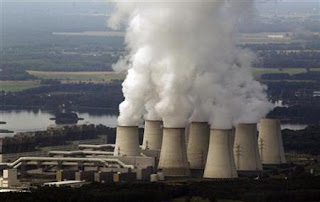Germany's move to close seven reactors has relinked its power market with coal prices, and many traders said the correlation could be there to stay.
Following the nuclear power plant accident in Japan in March, the German government decided to switch off seven of its oldest nuclear power plants until a safety review is completed.
But subsequent state election victories by the anti-nuclear Green Party have led many analysts to believe that these reactors will remain shut and that the remaining ten will also be taken off the grid ahead of schedule.To fill the nuclear production gap, German utilities have ramped up coal-fired electricity generation, and this has resulted in a strong rise in the price correlation rise between the two markets.
"Just half a year ago (in September 2010), this same government broke the price link between power and coal when it announced a life-time expansion of nuclear power plants, and now its U-turn is tying the chains right back together," one German utility trader said.
In the late months of 2011, coal futures were already on the rise, while German power forwards fell due to the government's nuclear extension. Prices only slightly began to rise after a cold front covered much of Europe under a thick layer of snow.
At their low in early December of last year, the price correlation between German power prices for baseload (24 hours) delivery in 2012 and API2 2012 coal futures stood at below minus 0.60 percent, meaning that the two products were effectively moving in opposite directions.
Since then, however, the correlation has steadily risen to above 95 percent.
"It was the uprisings in North Africa and the Middle East that began re-aligning power and coal prices, but it took the nuclear re-think in March and the resulting jump in power prices to fully re-establish the correlation between power and coal," a financial energy trader said.
Most market sources agreed that the closer link between German power and coal prices was likely to remain intact as the country's rushed nuclear exit would result in a power sector that relies more heavily on coal power.
"Until many more gas power plants are built and a lot more renewables are there, Germany is likely to rely on coal power plants that were initially to be taken off the grid in the coming years, and that should result in a fairly close power/coal link in the mid-term," the utility trader said.(Reuters)


+tactical+missile+system.+INFOgraphics.jpg)
Comments
Post a Comment